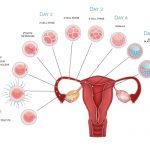Blastocyst VS Day 3 embryos
BackAfter making the life-altering decision, Intended Parents start the surrogacy journey, in many cases thousands of miles away from their homes with the only purpose of wanting to experience the joys of Parenthood that make life more challenging, but at the same time more enjoyable. Taking the responsibility of parenthood is not an easy job, but this way family bonds become stronger and life more reasonable.
Once the programs starts and a surrogate is assigned, Intended Parents start to wonder how to increase the pregnancy chances with embryos as their quality plays a crucial role in high IVF success rate. Knowledge safeguards Intended Parents from emotional stress and makes them more open to recommendations, which are made only for their own benefit.
And here start the questions whether it is safe to cultivate them to Blasto stage? At least how many embryos should be presented in order to develop them to Blastocyst? What are the related risks, advantages and disadvantages. Blastocyst, the same Day 5 embryo with more cells, gives the possibility to select better quality ones to increase the chances of impregnation and lessen the odds of a multiple pregnancy.
There is still a risk of a twin pregnancy, but the possibility is very low, because normally in Blastocyst not more than 2 embryos are being transferred. One embryo transfer is not recommended as it has very low success rate.
Nowadays there are many controversies about Day 3 and Blasto embryos. As per the well-spread opinion, a natural environment is considered to be better for embryos to develop rather than an artificial one, that is why it is more preferable to transfer them as soon as possible on day 3.
In many cases embryologists recommend to grow embryos till Blastocyst stage if there are many good quality embryos and patients' previous IVF attempts were unsuccessful. Interned Parents should remember that not all embryos are developing till Blastocyst, that is why this decision should be made very carefully depending on egg count and embryo quality. Only after thorough observation during the IVF procedure, the best possible decision can be made.
Recap:
- Blastocyst culture and day 5 embryo transfer makes it possible to choose the best quality embryos for in vitro fertilization.
- Embryo quality is vital when it comes to infertility.
- A natural environment is much better for embryos than artificial ones.
- The final decision should be made based on egg count and embryo quality.
